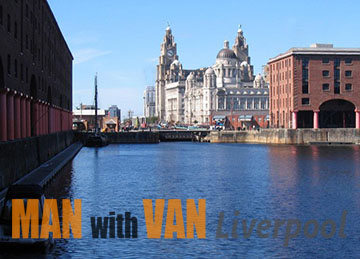Now that all the details concerning your move to Liverpool are figured out – man and van company, utilities, where the kids are going to go to school, you can sit back, relax and plan some sightseeing at your new home city. Listed below are several buildings that present some of the most interesting attractions in Liverpool:
 The former traffic office at Albert Dock was completed in the middle of the 19th century, soon after the warehouses on the same dock were built. It is a three storey building with a basement and has a Tuscan style portico that is to a large extent responsible for the unique way Albert Dock looks – and the reason it is among the most distinct buildings in Liverpool. The Warehouses A-E at Albert Dock are also bearing Grade I listing and are popular with tourists.
The former traffic office at Albert Dock was completed in the middle of the 19th century, soon after the warehouses on the same dock were built. It is a three storey building with a basement and has a Tuscan style portico that is to a large extent responsible for the unique way Albert Dock looks – and the reason it is among the most distinct buildings in Liverpool. The Warehouses A-E at Albert Dock are also bearing Grade I listing and are popular with tourists.- The Bank of England building at Castle Street is again Grade I listed. It was completed between 1845-8. It was designed in a neo-classical style by one of the most famous architects of the day – C.R. Cockerell. Adorned with an ionic colonnade on the face towards Castle Street.
- The Church of All Hollows, built in the period between 1872-6 has a much older portion – one that dates back to the 14th century – that makes it so unique and interesting for specialists and ordinary visitors alike. Its stained-glass windows were the idea of Edward Burne-Jones. The new church was financed by the Bibby family, which mausoleum is currently in the south-east corner of the complex.
- The Liverpool Cenotaph was originally built in honor of those who have fallen in the First World War during the Inter-war period. After WWII new additions were made in order to make the cenotaph a beacon for all those who were victims of the two great wars. The design is by Lionel Budden, with carving by Herbert Tyson Smith. The Liverpool Cenotaph, a Grade I listed building, is located on St Georges Plateau.
- Oriel Chambers date back to 1864. It is the first building with metal framed glass curtain walls. The idea was Peter Ellis’s, who also became the architect of the Oriel Chambers, which are located quite near Liverpool’s town hall. It is often featured on lists of the most interesting/favorite buildings in England and, coincidentally or not, has a Grade I listing because of its outstanding historical importance.
- Woolton Hall is located in the eponymous suburb is a rather large country house that was designed by the rather influential architect Robert Adam. It was originally built in the very beginning of the 18th century, but it was Adam who gave Woolton Hall the design it is so well known for today during the extensions and renovations that were conducted in 1772. Woolton Hall was bought by a local man in 1980 and was extensively renovated. As you can guess, it was also listed with a Grade I status which protects it from any form of alteration or demolition.